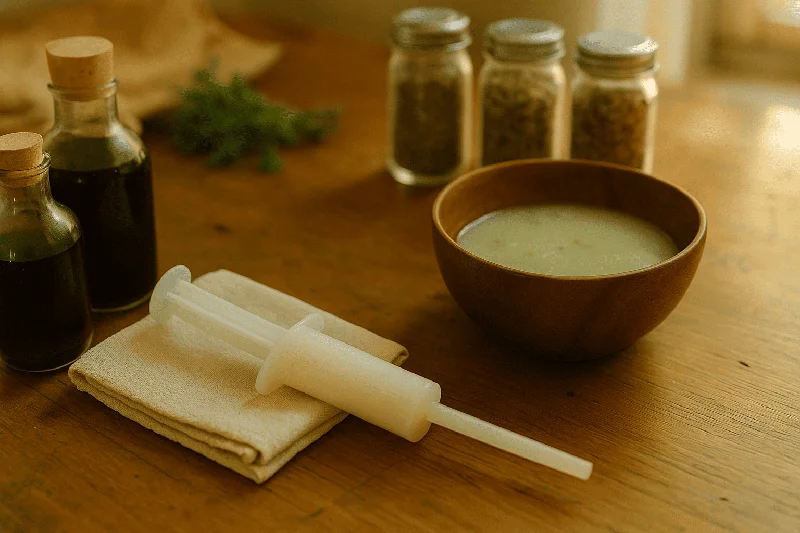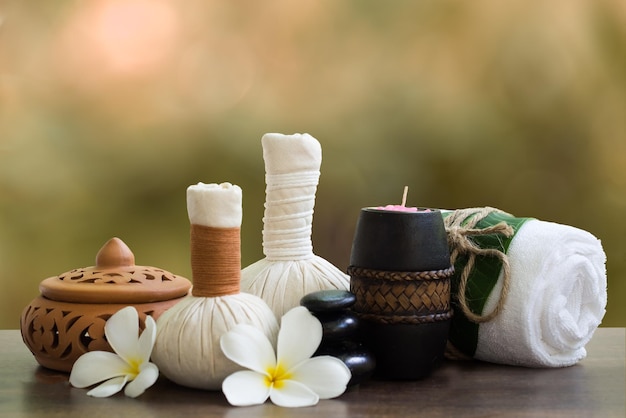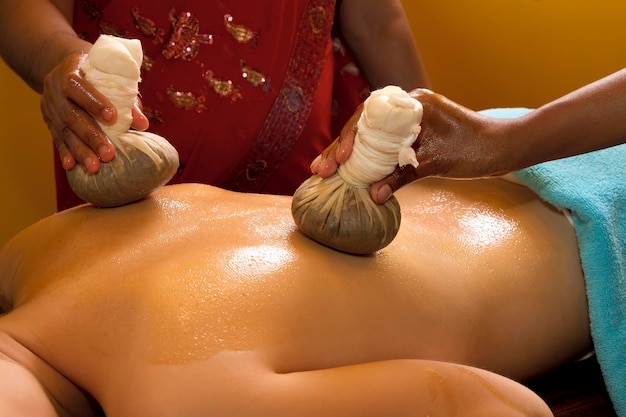Ask Ayurvedic doctor a question and get a consultation online on the problem of your concern in a free or paid mode. More than 2,000 experienced doctors work and wait for your questions on our site and help users to solve their health problems every day.
Shop Now in Our Store
Tikta Ksheera Basti: A Comprehensive Guide to Ayurvedic Cleansing

Imagine a therapeutic procedure that harnesses the synergy of bitter herbs and nourishing milk to detoxify the body while restoring balance to your digestive system. This is the essence of tikta ksheera basti, a specialized Ayurvedic cleansing technique lauded for its potential to rejuvenate internal organs, regulate gut health, and support overall well-being. In recent years, a growing number of health professionals have begun exploring the potential of Ayurvedic therapies, including tikta ksheera basti, as complementary or integrative approaches alongside conventional treatments. In this article, we delve into the scientific background, clinical insights, and research findings surrounding this unique enema therapy—offering a well-rounded, user-friendly guide to help you understand its principles, benefits, and limitations.
Disclaimer: This article is for informational purposes only and should not replace the guidance of a qualified medical professional. Always consult a healthcare provider before attempting any new therapy or treatment.
Table of Contents
- Understanding Tikta Ksheera Basti
- Scientific Principles and Underlying Concepts
- Current Research and Evidence Base
- Procedure: Step-by-Step Guide
- Potential Benefits and Clinical Applications
- Possible Limitations and Side Effects
- Contraindications and Safety Precautions
- Expert Guidelines and Clinical Consensus
- Frequently Asked Questions (FAQ)
- Conclusion and Call to Action
Understanding Tikta Ksheera Basti
In Ayurveda—an ancient Indian system of medicine—basti refers to therapeutic enemas designed to detoxify the body and restore the balance of the three fundamental energies, or doshas (Vata, Pitta, and Kapha). While there are multiple formulations of basti, tikta ksheera basti stands out due to its key ingredients: bitter herbs (referred to as tikta in Sanskrit) and milk (ksheera). The infusion of these substances, introduced via an enema, is believed to help cleanse the colon, remove stubborn toxins (ama), nourish and soothe irritated tissues, and rebalance the digestive system and gut flora. This specialized therapy has gained attention for its potential role in managing conditions such as inflammatory bowel disease, chronic constipation, psoriasis, and other disorders rooted in systemic inflammation. Although clinical validation is ongoing, many Ayurvedic practitioners have reported anecdotal success in improving digestive health, skin conditions, and overall vitality through carefully administered tikta ksheera basti sessions.
Scientific Principles and Underlying Concepts
Ayurvedic Rationale
According to classical Ayurvedic texts (e.g., Charaka Samhita, Sushruta Samhita), the bitter taste (tikta rasa) is inherently “cooling” and detoxifying. It helps alleviate aggravated Pitta and Kapha doshas, which are often implicated in inflammatory processes. Milk, on the other hand, is considered nourishing (balya) and cooling (shita virya), making it an excellent medium for delivering bitter herbs without causing excessive dryness or irritation.
Modern Perspectives: Gut Health and Inflammation
Modern research increasingly links chronic inflammation to a range of health problems, from metabolic issues to autoimmune disorders. By combining anti-inflammatory herbs and a soothing milk base, tikta ksheera basti may help:
- Modulate Gut Microbiota: Preliminary studies in integrative medicine suggest that herbal enemas can positively influence gut microbiota.
- Reduce Inflammation: Bitter herbs often contain phytochemicals (e.g., terpenes, flavonoids) shown in laboratory studies to exhibit anti-inflammatory properties.
- Improve Mucosal Integrity: Milk’s lipid content and proteins may coat and protect the intestinal lining during the cleansing process.
Note: While these mechanisms are theoretically plausible, large-scale, high-quality clinical trials are still required to confirm these benefits conclusively.
Current Research and Evidence Base
Though tikta ksheera basti has been a part of Ayurvedic practice for centuries, scientific documentation is relatively sparse. However, ongoing research in the fields of integrative and complementary medicine is shedding light on how this therapy works in tandem with conventional medical strategies.
- Small-Scale Clinical Trials: A study published in the Journal of Ayurveda and Integrative Medicine (2020) observed that patients receiving a combined course of tikta ksheera basti and standardized conventional treatment for inflammatory bowel disease showed reductions in abdominal pain and improved stool consistency. However, the sample size was small (n=30), and further studies with larger cohorts are needed.
- In Vitro & Animal Studies: Laboratory research on the phytocompounds found in bitter herbs such as Guduchi(Tinospora cordifolia) and Neem (Azadirachta indica) indicates anti-inflammatory and immunomodulatory effects. When combined with milk, these herbs’ absorption may be enhanced, though more rigorous scientific evidence is required to translate these findings into clinical recommendations.
- Systematic Reviews: Meta-analyses on Ayurvedic treatments for gut-related conditions typically highlight the need for larger randomized controlled trials (RCTs). While some reviews indicate potential benefits, they often mention methodological limitations, underscoring the importance of future well-structured research.
Key Takeaway: Although tikta ksheera basti demonstrates promising therapeutic value, definitive evidence remains limited. If you are considering this therapy, it is crucial to consult a qualified practitioner and keep informed about emerging scientific literature.
Procedure: Step-by-Step Guide
Below is a generalized step-by-step outline, but please note that exact protocols may vary based on a practitioner’s experience, patient condition, and clinical guidelines.
- Preparation and Diagnosis
- An Ayurvedic practitioner conducts a thorough assessment of your health, doshic imbalance, and medical history.
- Laboratory tests or imaging (e.g., blood work) may be recommended to rule out contraindications.
- Selection of Herbs
- Bitter herbs such as Neem, Guduchi, or Patola (Trichosanthes dioica) are commonly used.
- The choice depends on the patient’s dosha constitution, presenting symptoms, and any coexisting health conditions.
- Milk Infusion
- The prescribed herbs are boiled or decocted in milk under controlled conditions.
- The concentration and duration of boiling can vary; sometimes, additional ingredients like ghee or medicated oils are included to balance the formulation.
- Patient Preparation
- The patient may be advised to undergo mild internal cleansing or dietary restrictions for a day or two before the procedure (e.g., light, easily digestible meals).
- A short oil massage (Abhyanga) or steam therapy (Swedana) may be performed to enhance circulation and relax the muscles.
- Administration of the Enema
- The lukewarm tikta ksheera mixture is gently introduced into the rectum using a sterile enema apparatus.
- The patient is usually positioned on the left side, with legs slightly drawn up to facilitate comfortable insertion.
- The volume administered can range between 100 to 600 ml, depending on individual needs.
- Retention Phase
- Patients are advised to retain the medicated milk enema for a specified duration (usually 15 to 30 minutes).
- Deep breathing and relaxation techniques may help minimize discomfort and promote optimal absorption.
- Post-Procedure Care
- After expulsion of the enema, the patient might rest for an hour or more.
- Light, warm, and easily digestible meals are recommended.
- Depending on the treatment plan, multiple sessions (e.g., 5 to 8) may be scheduled over several days or weeks.
Professional Supervision: It is critical that tikta ksheera basti is performed under the guidance of a qualified Ayurvedic physician or a trained healthcare professional to minimize risks and ensure proper protocol.
Potential Benefits and Clinical Applications
While more extensive research is needed, the following potential benefits are often attributed to tikta ksheera basti in Ayurvedic literature and practitioner reports:
- Detoxification: Helps in the expulsion of metabolic waste products (ama), potentially relieving symptoms of sluggish digestion and fatigue.
- Anti-Inflammatory Effects: Bitter herbs are traditionally recognized for reducing inflammation in the gut and other tissues.
- Soothing the Gut Lining: Milk may cushion and hydrate the intestinal lining, counteracting dryness and irritation caused by certain bitter herbs.
- Skin Health: Systemic inflammation reduction may have a positive effect on conditions like eczema, psoriasis, and acne, though more data is needed.
- Regulated Bowel Movements: Some users report improved regularity and relief from chronic constipation or irregular bowel habits.
- Balancing Doshas: In the Ayurvedic framework, rebalancing Vata, Pitta, and Kapha can improve overall physical and mental health.
Possible Limitations and Side Effects
Despite the favorable properties attributed to tikta ksheera basti, it is not without potential drawbacks or risks:
- Limited Evidence: Modern clinical evidence is still in its infancy, necessitating cautious optimism.
- Allergic Reactions: Some individuals may be allergic to specific herbs or dairy products.
- Digestive Discomfort: Mild cramping, bloating, or diarrhea could occur if the formulation is too concentrated or improperly administered.
- Overuse: Excessive or frequent enemas can disrupt natural gut flora and potentially weaken bowel function.
Note: If you experience prolonged discomfort, severe pain, or other concerning symptoms, discontinue the therapy and seek medical attention immediately.
Contraindications and Safety Precautions
Tikta ksheera basti is not universally suitable. Contraindications often include:
- Severe Gastrointestinal Disorders: Cases of acute ulcerative colitis, acute Crohn’s flare-ups, or intestinal obstructions.
- Pregnancy: Enemas during pregnancy are generally discouraged unless specifically prescribed by an experienced professional.
- Serious Chronic Illness: Individuals with heart disease, uncontrolled diabetes, or kidney disorders may require alternative therapies or extra caution.
- Recent Surgery or Trauma: Post-operative care often calls for rest and minimal interventions.
Always consult a healthcare practitioner for personalized guidance, especially if you have underlying medical conditions or are on prescription medications.
Expert Guidelines and Clinical Consensus
Ayurvedic practitioners typically adhere to guidelines laid out in classical texts, complemented by modern clinical standards of care. The National Health Portal of India, along with several other reputable bodies, encourages integrative health approaches that combine Ayurvedic therapies with evidence-based medicine. Nevertheless, consensus statements underscore the importance of:
- Rigorous clinical evaluation prior to starting therapy.
- Standardization of herbal formulations to ensure safety and efficacy.
- Close monitoring of patients, especially those with co-morbid conditions.
- Interdisciplinary collaboration between Ayurvedic professionals and conventional healthcare providers.
Frequently Asked Questions (FAQ)
1. Is Tikta Ksheera Basti safe for everyone?
Not necessarily. People with acute gastrointestinal issues, uncontrolled chronic conditions, or recent surgeries should exercise caution. Always consult a qualified practitioner for personalized advice.
2. How many sessions are required?
The number of sessions can range from a single administration to multiple treatments spread over several days or weeks. The exact protocol depends on your health status, Ayurveda practitioner’s assessment, and your response to therapy.
3. Can it cure chronic illnesses like Crohn’s disease or ulcerative colitis?
While preliminary studies suggest potential benefits for inflammatory bowel conditions, tikta ksheera basti is not considered a stand-alone cure. It may serve as a complementary approach alongside standard treatments. More robust scientific data is needed to make definitive claims.
4. What should I eat before and after the procedure?
A light, warm, and easily digestible diet is typically recommended before and after tikta ksheera basti. Foods such as rice, cooked vegetables, and light soups are often advised to support digestion and reduce stress on the bowel.
5. Are there any side effects I should watch out for?
Mild bloating, abdominal cramps, or a change in bowel habits can occur. If these symptoms persist or worsen, discontinue the therapy and seek medical advice.
Conclusion and Call to Action
Tikta ksheera basti represents a fascinating intersection of ancient wisdom and modern integrative health practices. Its use of bitter herbs combined with a soothing milk base provides a unique therapeutic enema approach aimed at detoxification, gut health, and systemic healing. While anecdotal reports and emerging research point to potential benefits, the scientific community agrees that larger, more rigorous clinical trials are necessary to establish definitive efficacy and safety profiles.
If you’re intrigued by the promises of Ayurvedic therapies like tikta ksheera basti, consider consulting a qualified practitioner to discuss whether it aligns with your individual health needs. As with any medical intervention, a personalized, evidence-informed plan offers the best chance for positive outcomes.
How You Can Engage
- Share this article with anyone interested in Ayurvedic or integrative medicine.
- Comment below to share your experiences or ask further questions about tikta ksheera basti.
- Subscribe to our newsletter to stay updated on the latest in Ayurveda, holistic health, and integrative medicine.
Disclaimer: The information provided here is not a substitute for professional medical advice or treatment. Always consult a healthcare provider for guidance tailored to your specific health concerns.
By fostering dialogue, staying informed, and seeking professional guidance, you can make well-rounded decisions about whether tikta ksheera basti—or any other Ayurvedic therapy—may contribute to your holistic health journey.
This article is checked by the current qualified Dr. Harsha Joy and can be considered a reliable source of information for users of the site.




